Failed reforms of the Russian fleet
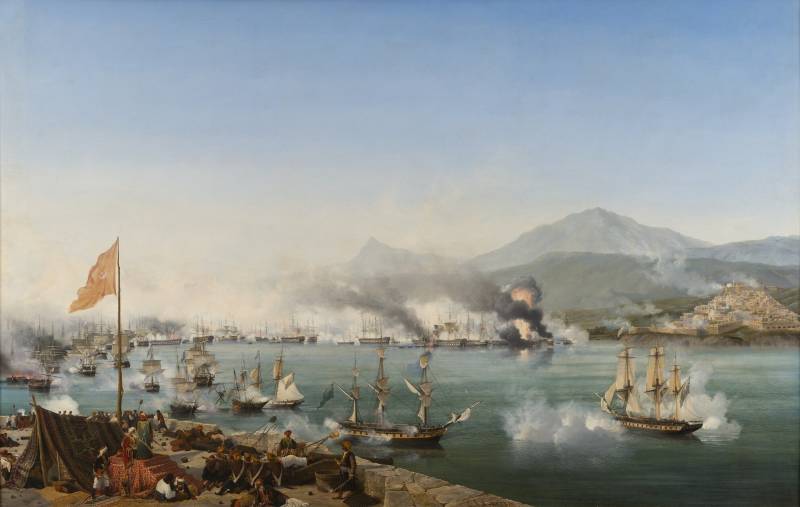
Control system before Nikolai
Немного stories. During the time of Paul I, the management structure fleet took on a rather confusing appearance. This forced Alexander I to reform the Naval Department, transforming it into a ministry, where he replaced collegial rule with the sole rule of ministers.
The scheme was like this: “The minister exercised his authority over the Admiralty College and the Admiralty Department. According to the last two institutions, the minister's department consisted of two expeditions; in addition, under the same department there were the Fleet Military Campaign Office (affairs of fleet personnel) and the General Kriegsrecht (ship department).
The Admiralty Board, which in turn consisted of 5 expeditions - economic, executive, artillery, treasury and accounting - controlled the actions of the fleet, was in charge of its maintenance, manning, supplies and weapons, as well as the construction of ships.

St. Petersburg Admiralty, early XNUMXth century
The Admiralty Department consisted of scientific (educational institutions, hydrography, libraries, museums, maritime literature, etc.) and construction (factories and factories serving the fleet, construction of buildings for the naval department and supervision of them).
Thus, the Admiralty Collegium itself had the greatest relation to the fleet (the Black Sea Fleet was in a special position: the chief commander of the Black Sea Fleet and ports exercised in his person the power that extended to the circle of activities of the Admiralty Collegiums and the Admiralty Department, and was directly subordinate to the minister). The Admiralty Collegium consisted of 4 to 6 flagships, of which 2 dropped out annually, so as not to permanently distract them from naval service.
The members of the Admiralty Department included directors of naval and hydrographic works, artillerymen, officials, "skilled in verbal science", official, "skilled in physics and mathematics", and optional members are professors and scientists known for their work in sciences related to maritime affairs. Both the Admiralty Boards and the Admiralty Department were chaired by the minister.
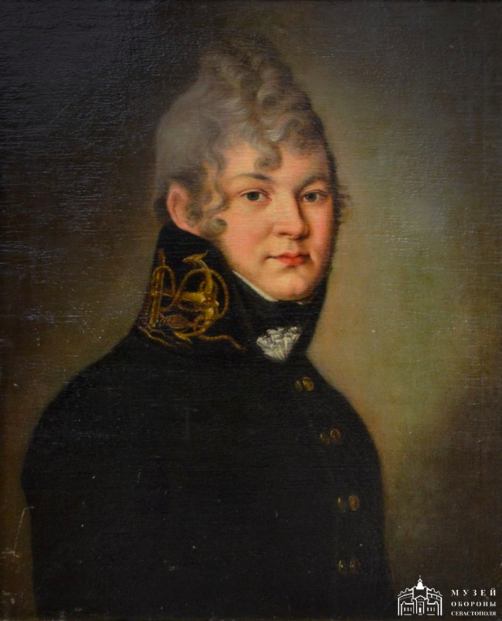
Minister of Maritime Affairs Ivan Ivanovich Traverse
The minister’s department was, in essence, a transfer authority that conducted the minister’s personal correspondence and relations with other ministries, preparing all-important reports and notes for the committee of ministers, the state council and the senate.” .
In 1821, a new post of Chief of Staff of His Imperial Majesty for the naval unit was temporarily established, and from that moment the Main Naval Headquarters of the Fleet traced its history.
“Corruption will destroy this country!”
As for corruption, you can simply give the most striking example.
Emperor Alexander I instructed the chief of the naval staff, A.V. Moller, to prepare a ship on which, in the early summer of 1824, Grand Duke Nikolai Pavlovich and his wife were to go to Prussia. The ship Emgeiten was sent to Kronstadt for repairs and preparation for sailing.
In the spring of 1824, A.V. Moller decided to check how the repairs were going. At the Kronstadt port office they said that work has slowed down because there are not enough good caulkers. Moller went to the port and saw that next to the Emgeiten, on which no one was working at all, there was a foreign merchant ship, which was caulked and sheathed with government copper by the best craftsmen of the port.
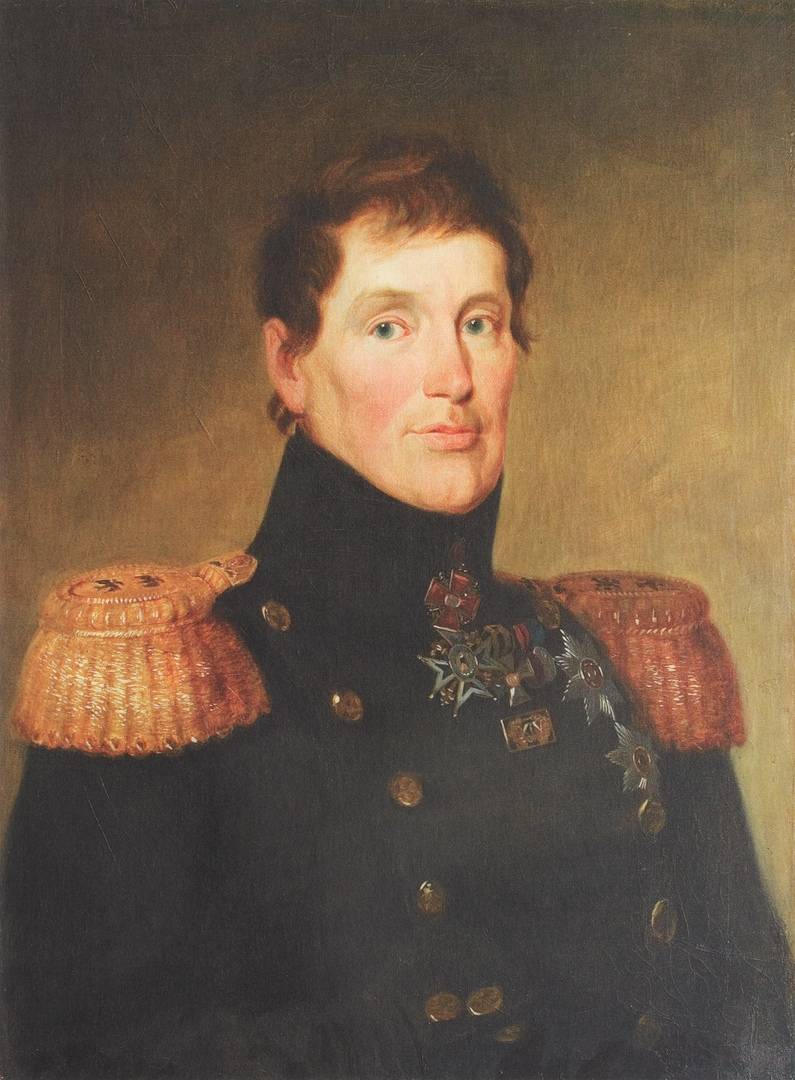
Chief of Naval Staff Anton Vasilievich Moller
Anton Vasilyevich could not hide the results of his check, especially since the time of departure of the Grand Duke was approaching. After this, a high-quality repair of the Emgeiten was urgently carried out, and on July 24, 1824, Nikolai Pavlovich and his wife departed for Prussia by ship.
During the investigation of the unrest identified in Kronstadt and the investigation, it was established that "organized crime".
Port officials entered into a conspiracy with shipwrights and systematically plundered government goods. This was common knowledge, so foreign skippers considered Kronstadt the best and cheapest port for repairing their ships. Materials intended for the repair of Russian ships were used, the money was divided
between officials, craftsmen and the head of the port F.V. Moller, who received the bulk of the merchants' money.
The governor of Kronstadt managed to get away unscathed after the scandal. Then he was "unsinkable". Friendship with the Minister of the Navy de Traverse, a good impression from visiting Kronstadt in 1819, which Emperor Alexander I remembered - all this made it possible to extinguish the flaring scandal. But Nikolai Pavlovich was not in Kronstadt in 1809, did not appreciate his friendship with Traverse and sent Moller Sr. to court.
The following circumstance became an additional incentive for Nikolai. In 1825, after the flood, the restoration of the Kronstadt port began. To speed up construction in 1826, many prison companies were sent there with participants in the Decembrist uprising. The land military and naval departments were instructed to select several hundred “most vicious” lower ranks, turn them into prisoners and create prison companies. It was ordered to allocate money for their maintenance.
The beginning of 1827 was marked by a very high mortality rate among the sailor prisoners. The commission found that the Maritime Department and the chief commander of the Kronstadt port, F.V. Moller, responsible for the work, were guilty of the fact that the sailors were poorly accommodated, their barracks and barracks were dirty, damp, cramped, cold, their food was scanty and bad , there is no paramedic, sick sailors do not receive help. The money allocated for the maintenance of the sailors is stolen, most of it ends up in the pocket of Vice Admiral F.W. von Moller.
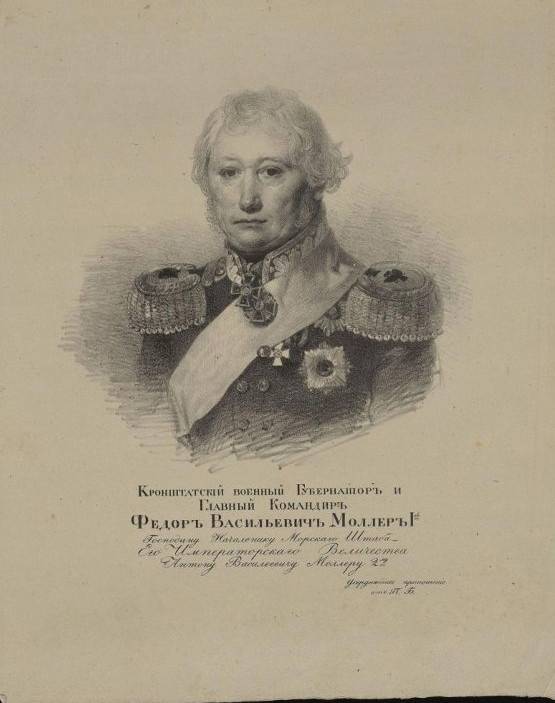
Head of the Kronstadt port Fyodor Vasilyevich Moller, brother of Anton Vasilyevich
It is clear that as a result of the results, Fyodor Vasilyevich von Moller was dismissed from the fleet with a damning characteristic of Nicholas I: “For unforgivable riots, obvious neglect of duty and illegal actions”.
In general, it is clear that something had to be changed, since the existing fleet management system does not meet the requirements at all.
“The fleet is too serious a matter to be trusted to its sailors”
Nicholas I decided to reform the fleet in the image and likeness of the army, referring primarily to the management and audit structure. And initially Vice Admiral Anton Vasilyevich Moller took up this task. But in 1826, the emperor’s commission discovered... the wildest theft of government materials in the port of Kronstadt since 1810, and the group of embezzlers was headed by the elder brother of the main naval reformer - Fyodor Vasilyevich Moller, we just wrote about this above.
In this situation, the emperor decided that “the fleet is too serious a matter to be trusted to its sailors”, and called a man from the outside who was not involved in naval squabbles. It turned out to be Alexander Sergeevich Menshikov, whom Nikolai knew well from the time of the Foreign Campaigns of the Russian Army in 1813–1814. And on December 4, 1826 A.S. Menshikov was appointed "to assist" to the Minister of the Navy as a kind of consultant on the peculiarities of the structure of the military-land department, primarily its bureaucratic apparatus, which Menshikov knew well.
Entry in Menshikov’s diary from the same December 4, 1826: “The Emperor said to me: “Laissez venir ces gens-là à Vous et voyez ce qu'ils veuilent et ce qu'ilspensent” (Let these people come to you and you will see what they want and what they think), speaking about various naval officials".
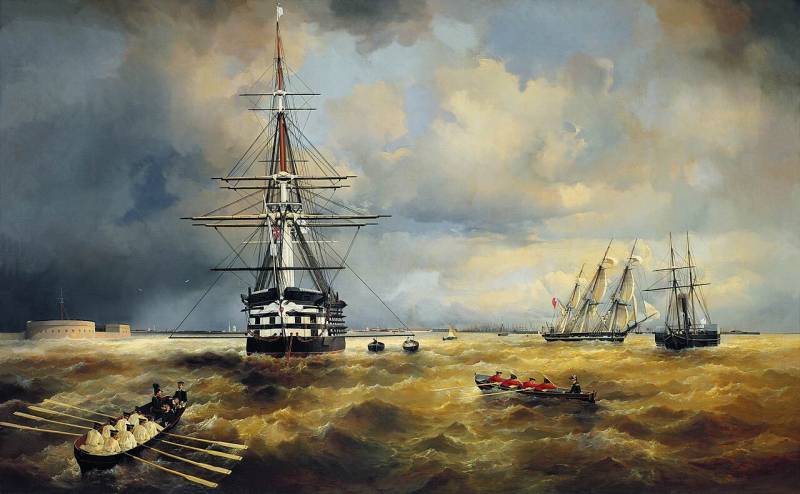
Aivazovsky. Kronstadt raid.
Now is the time to give one more quote: “To top it off, by the end of 1826, the naval administration was split by an internal conflict between the head of the fleet and Quartermaster General V. M. Golovnin.
The measure taken by the emperor to resolve the situation in the department was the secondment of Adjutant General Prince Menshikov, officially “to help the Minister of the Navy with certificates,” and unofficially - for a long, emotionally uncomfortable process of checks, interrogations, personal conversations in the tsar’s office, demotions, humiliating non-dismissal “for health reasons”, etc. The situation was complicated by nepotism among the administrative “top” of the fleet and the mutual responsibility of middle and low-level officials; all links in the chain were involved in abuses of the state treasury".
What was Alexander Sergeevich Menshikov like and with what baggage did he come to the fleet reform committee?
Alexander Sergeevich Menshikov joined the army from the Ministry of Foreign Affairs, and the navy from the artillery. In 1805, he received the rank of collegiate cadet and a little later was assigned to the diplomatic mission in Berlin, from where he later moved to London, and a little later to Vienna. But in 1809 he became a second lieutenant in the Life Guards artillery battalion and took part in the war of 1809–1811, serving as an adjutant to Count Kamensky.
Menshikov met the Patriotic War of 1812 as part of the Preobrazhensky Regiment in the 1st Western Army of Barclay de Tolly, participated in all battles, including Borodino, went through foreign campaigns, reached the rank of colonel, received the Order of St. Anne with swords and sword with the inscription “For bravery.”
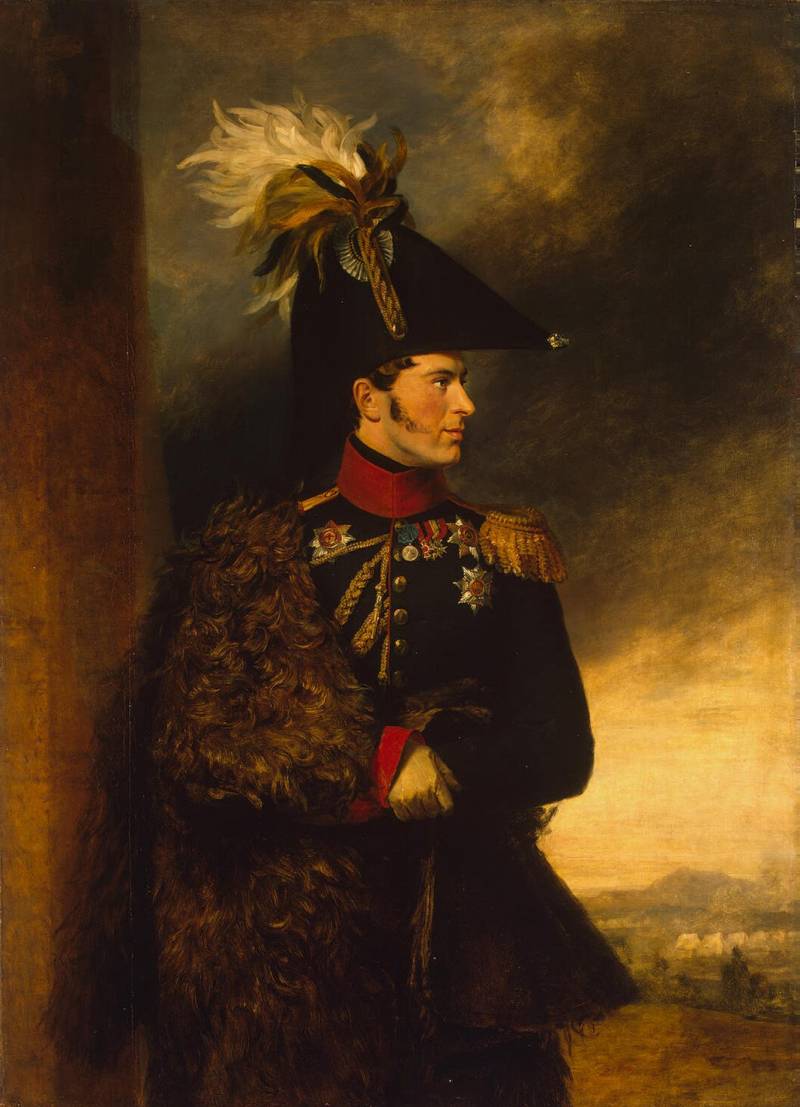
Alexander Vasilievich Menshikov.
In 1816 - Director of the Office of the Chief of the General Staff E.I.V. In the same year "for distinction in service" promoted to major general with transfer to the retinue of His Imperial Majesty in the quartermaster department. On October 6, 1817, Menshikov was promoted to adjutant general, and at the same time received the post of Quartermaster General of the General Staff Office. It was then (1820) - for the first time - that Menshikov was offered command of the Black Sea Fleet, but he refused because “I had no idea about naval service”.
In 1821, he quarreled with Alexander I, considered the offer to become an adviser to the ambassador in Dresden an insult, resigned and left the service.
In 1826, the new Emperor Nicholas I returned Menshikov to service and sent him on an emergency diplomatic mission to Persia, since alarming messages were received from the governor in the Caucasus, Ermolov, that Persia was about to declare war on Russia. Menshikov arrived in Erivan, but achieved nothing and was soon arrested, and until the end of the summer of 1826 he was imprisoned in the Erivan fortress. Released at the end of August, he participated on the side in the final battles of the Russo-Persian War.
Well, then the knight’s move just happens - upon returning from captivity in December 1826, Menshikov presented the emperor with a project for transforming the fleet and... was included in the Committee for Transforming the Fleet, and at the same time was renamed from major general to rear admiral.
One can argue a lot about the legality of such a decision by the tsar, but only one thing is clear - at that time he did not trust the naval personnel at all, including because of the Decembrist uprising and the active participation in it of officers of the Guards and other naval crews, but above all - because for corruption, because Nikolai decided that it was necessary to conduct a full audit of the fleet.
At this very time, the fleet had two main problems.
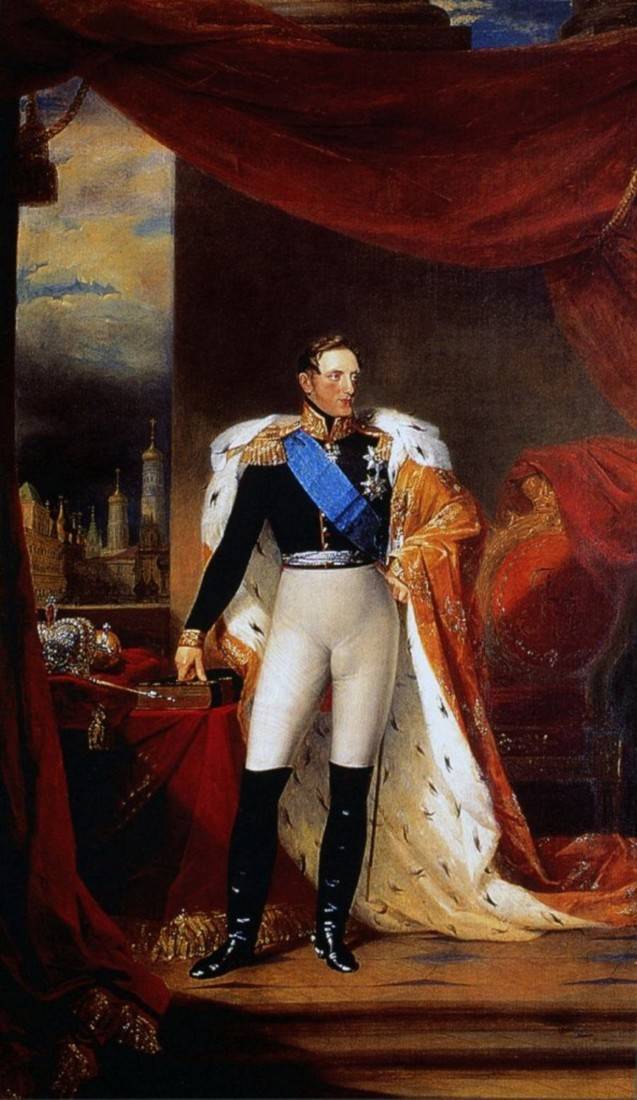
Emperor Nicholas I.
The first is the urgent dispatch of Heyden's squadron to the Mediterranean Sea to join the British and French against the Turks and help the rebel Greece.
The second was the loudest corruption scandal, where the commander of the Kronstadt port Fyodor Vasilyevich Moller and the quartermaster general of the fleet Vasily Mikhailovich Golovnin were on opposite sides of the barricades.
As for the Mediterranean, in 1826 the Observation Detachment of Rear Admiral Thaddeus Faddeevich Bellingshausen was sent there, consisting of the 74-gun ship “Tsar Constantine” and the 36-gun frigate “Elena” (both built in 1825, launched at the Solombala shipyard in Arkhangelsk ).
On June 10, 1827, the squadron under the command of Admiral Dmitry Nikolaevich Senyavin set sail. It consisted of 9 battleships, 7 frigates and 1 corvette. On July 27, the ships approached Portsmouth, here a detachment of ships was allocated from the squadron under the command of Rear Admiral Login Petrovich Heyden to be sent directly to the Mediterranean Sea. This detachment included the battleships “Azov”, “Gangut”, “Ezekiel”, “Alexander Nevsky”, frigates “Konstantin”, “Provorny”, “Elena”, “Kastor” and the corvette “Gremyashchiy” (almost all ships also 1825 -built in 1826).
Before departure, Tsar Nicholas I gave strict orders to Heyden to divide the warring Ottoman and Greek fleets among themselves, in addition, as the emperor wrote, “I hope that in the event of any military action, the enemy will be dealt with in Russian». What Nicholas meant by this is not known for certain, but most likely it was an order for a decisive battle and the complete defeat of the Egyptian-Turkish fleet.
In the rescript to Rear Admiral Heyden, the king also ordered: in case of ineffectiveness "cruising of three connected squadrons", begin "actual blockade of the Dardanelles".
For Europe, Nicholas I formulated the purpose of the squadron’s campaign in a streamlined manner: “The restoration of Greece is the desire of the immortal Catherine. These three squadrons must remove the yoke of Asian despotism from that country, stop sedition and restore peace and tranquility.".
The Russian squadron arrived in the Mediterranean only in October 1827, which allowed the English Admiral Codrington to make a cruel joke - Columbus reached America less than the Russians did to Gibraltar.

Navarino naval battle, 1827.
The problem of chaos and corruption in the maritime department had to be dealt with against the backdrop of sending squadrons.
In 1825, the budget of the naval department amounted to 20 million 682 thousand rubles in banknotes (for example, in 1813 17 million rubles were allocated for the fleet, in 1815 - 15 million rubles, and the highest will was communicated to the naval minister - “that this amount will certainly was sufficient for all expenses").
Taking into account the fact that the construction of a 74-gun ship without weapons cost the country 193 thousand rubles in banknotes, this amount would be quite enough to restore the ship composition of the Baltic Fleet after the flood. And imagine the tsar’s surprise when in 1825-1826 only three battleships were built (“Tsar Konstantin”, “Azov” and “Paris”) and... not a single frigate.
It was after this that Menshikov received carte blanche.
Prince's reforms
The first thing Menshikov rebelled against, having become familiar with the naval procedures, was voting. In fact, promotion to the highest ranks was carried out in the navy not on merit or experience, not even on length of service, but by voting. But what is good in electing a president or prime minister is not always good for the military. As a result, the bosses were not the smartest and most experienced, but those who knew how to come to an agreement and conduct “election campaigns” correctly.
This is how Veselago describes his run in “A Brief History of the Russian Navy”:
“The rules of voting, although changing in detail, have been preserved to the present day, in which they received some improvements and a more correct order.
So, for example, junior ranks are excluded from running for seniors, balls expressing “doubt” are destroyed, and only two categories are left: worthy or unworthy.
You are not allowed to run for all ranks, but only for those that represent a significant difference in their duties, such as the ranks of lieutenant commander, captain and flag officer. Promotion from midshipmen to midshipman and from midshipman to lieutenant was carried out by examination; from lieutenants to captain-lieutenants, from captain-lieutenants to captains and from captain-commanders to rear admirals by voting.
The seniority of officers promoted by ballot was determined by the number of satisfactory balls; and whoever had more than a third unsatisfactory was considered voted out. Those who were voted out were dismissed from service twice with a half pension or on disability if they had served; but they were deprived of their full pension, even if they had served for 40 years or more.
To be promoted from midshipman to midshipman, in addition to passing the exam satisfactorily, it was still necessary to complete five naval campaigns; and when promoting from midshipman to lieutenant - at least 4 years of service in the rank. For the opening vacancies of flag officers, half the number was made by royal order and half by ballot; a quarter were promoted to captain by tsar’s order, a sixth to captain-lieutenant, and the rest by ballot.”.
But this is only the tip of the problem, since the main task was the reorganization of management.

Kronstadt fort "Alexander I".
The result of Menshikov’s restructuring of fleet management (and this applies specifically to the Baltic, since a much simpler and archaic structure has been preserved in the Black Sea) is the following.
The main body is the Maritime Ministry, headed by the Minister of the Navy, who has no real power at all, because it is spread across departments.
Further, the bodies - the Admiralty Council, the Office of the General on Duty and the Main Naval Headquarters - have equal rights. The Admiralty Council is an advisory body of the heads of departments of the Naval Ministry. Later, the Marine Scientific Committee and the Office of the Hydrographer General were added to the Council.
The Office of the General on Duty was subordinate to the Inspectorate and Audit Departments, but the General on Duty could only state the fact of waste or improper work; he could not influence them.
Thus, the fleet was actually controlled by the Main Naval Staff, which consisted of:
– Office of the Chief of the Main Naval Staff;
– Office of the General Hydrographer (taken away from the Admiralty Council);
– Office of the general on duty (who considered his department a separate diocese and had little contact with the headquarters);
– Inspector and Audit departments (as subordinate to the general on duty);
- Office of the Quartermaster General;
– Office of the Headquarters Doctor;
– Department of ship scaffolding.
Thus, the Main Naval Staff made its own decisions, built its own ships, reported to itself on the implementation and checked itself!
The Chief of Staff, Hydrograph General, Inspector of Naval Artillery, Inspector of the Naval Construction Unit, Head of the Military Campaign Office of E.I.V., Squadron Major E.I.V., Flag Officers, Generals and Adjutants of E.V. .I.V., that is, the body is absolutely collective, and its responsibility was spread across all participants of the Headquarters. No wonder Admiral Putyatin laughed about this topic:
Thus, Menshikov created an excessive bureaucratic structure, where there were a bunch of officials who received money from the state, but had no real responsibility for this money. Simply put, it was an ordinary sinecure.
Oh yes, it’s worth mentioning the Port Authority, which removed all possible responsibilities from the port captains and assigned them to themselves. At the same time, the ports of Abo, St. Petersburg, Rochensalm, Kronstadt, Revel, Sveaborg were subordinate to the Main Naval Headquarters... as well as Kazan, Arkhangelsk and Astrakhan! Management in St. Petersburg!
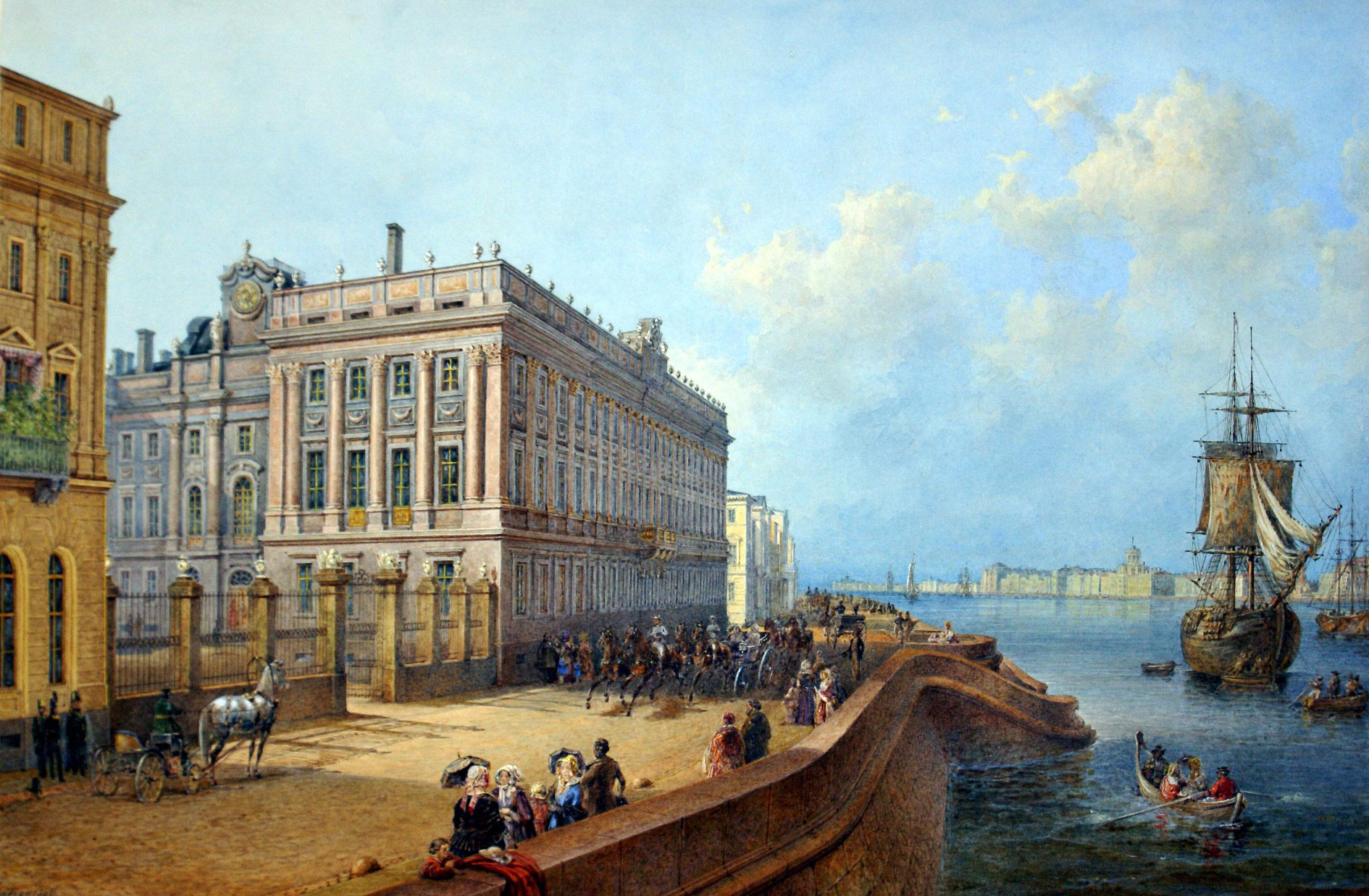
V. S. Gardener. View of the Marble Palace from the Neva.
And so it turned out that in the Baltic Fleet, the work of building and bringing the fleet into combat readiness degenerated into a struggle for cash flows and discussions of small matters, such as whether to build a new pier in Astrakhan or wait? Should oaks be floated in Kazan or transported on belyans? Etc. That is, issues that could well have been resolved by a port captain vested with normal powers.
In fact, this entire bureaucracy was created as a veil to cover with a fig leaf the sole government of only one person - first, comrade (deputy) Minister of the Navy Alexander Sergeevich Menshikov, and then the Minister of the Navy himself, which the prince became in 1836.
It was this vague system without a clear distribution of duties and responsibilities that greatly hindered Russia in the Crimean War.
References:
1. K. V. Donik “Transformations of the Maritime Administration in 1827, some aspects of the problem” - Bulletin of Tambov University, 2022.
2. K. V. Donik “Figure of mistrust: Prince Menshikov in the Naval Department of the reform period of 1826–1828.” – Historia Provinciae – Journal of regional history. – 2020. – T. 4. – No. 3. – P. 702–733.
3. G. A. Grebenshchikova “To the 190th anniversary of the naval battle of Navarino” - http://morskoesobranie.ru/article/eafe37/k-letiyu-morskogo-srazheniya-pod-navarinom.
4. “Historical review of the development and activities of the Maritime Ministry over a hundred years of its existence (1802–1902)” - St. Petersburg: Printing house of the Maritime Ministry, 1902.
5. Zolotarev V. A., Kozlov I. A. “Three centuries of the Russian fleet, XIX - early XX centuries” - M.: ACT; St. Petersburg: Polygon, 2004.
Information